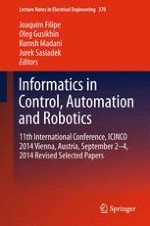
2016 | OriginalPaper | Buchkapitel
Using Distance Graphs to Find Meaningful Levels of a Hierarchical Sequence Prior to Performing a Cluster Analysis
verfasst von : David Allen Olsen
Erschienen in: Informatics in Control, Automation and Robotics
Aktivieren Sie unsere intelligente Suche, um passende Fachinhalte oder Patente zu finden.
Wählen Sie Textabschnitte aus um mit Künstlicher Intelligenz passenden Patente zu finden. powered by
Markieren Sie Textabschnitte, um KI-gestützt weitere passende Inhalte zu finden. powered by